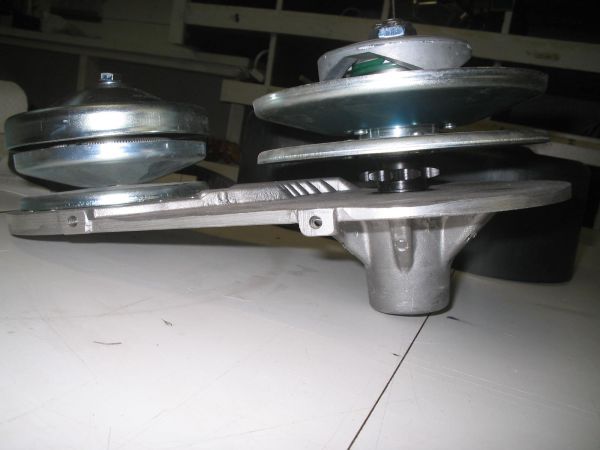The torque converter tav2 30 has a built in jackshaft about 1 foot apart from the engine sproket, you can not place the jackshaft anywhere in this case since the driven unit goes on the backplate provided by the kit, the advantage of the kit it is that is cheaper and makes the job easier by not requiring a separate jackshaft.
Well if you did not use the back plate I guess you could place the jackshaft anywhre.
In the case of the torque converter 20 and 30 series, it consist of 2 units a driver clutch that goes in the engine sprocket and a driven unit that goes in the jackshaft.
So technically a jackshaft is required (it is built in the kit, tav2 30), what I meant to say when I said a jackshaft was not required, it was that an additional jackshaft to the one in the kit is not required, and in the case of the other torque converters a jackshaft is required for the driven unit as is in the case of series 20 and 30.
In fact in the tav2 30 kit, the belt to chain it is a jackshaft that is built in.
The reason I believe a large sprocket might be needed is that the torque converter provides a ratio of 2.7:1, which can be increased by using the large sproket, for example the ratio using a 36 tooth sprocket at low speed would be 2.7 x 36/10 giving a ratio of 9.7:1, with a large sprocket it would be 2.7 x 55/10= 14.9:1 which is more torque for low end, for high speed 36 tooth might provide too much speed for the bike using a 6.5 HP engine, unless another jackshaft in addition to the one the torque converter uses is used. That will also work, but would be more work installing.
In comparison the gear box in our 2 strokes are about 4.1:1 ratio which is a larger ratio than 2.7:1 that is the reason for the large sprocket.
So in conclusion by using the torque converter we are using a jackshaft.
Well when I get the engine, and the torque converter arrives I will test with different sprockets.









